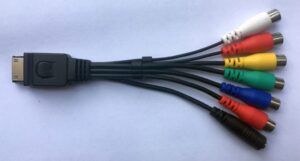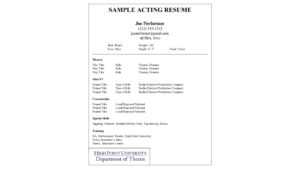Here are some of the best examples of movie scripts to read for your genre to help you hone your craft:
Drama
Screenplays like American Beauty offer great examples of how to write a scene. Other drama scripts include:
- Boogie Nights
- Forrest Gump
- Her
- Eternal Sunshine of the Spotless Mind
- Jerry Maguire
- Little Children
- Lost in Translation
- Straight Outta Compton
- The Truman Show
- Up in the Air
- The Visitor
- Good Will Hunting
- Whiplash
Comedy
Comedy scripts like Youth in Revolt will show you how to keep an audience engaged using humor. More examples include:
- The Disaster Artist
- Election
- The Way, Way Back
- (500) Days of Summer
- Bridesmaids
- The Hangover
- Hannah and Her Sisters
- Mean Girls
- Planes, Trains & Automobiles
- Sideways
- Stranger Than Fiction
- There’s Something About Mary
- When Harry Met Sally
- Birdman
Action/Adventure
If you’ve seen Raiders of the Lost Ark, you know how important script structure and dialogue are to this genre. Other screenplay examples include:
- 300
- Aliens
- Inglorious Basterds
- The Bourne Ultimatum
- The Dark Knight
- Die Hard
- Ocean’s Eleven
- The Lord of the Rings: The Fellowship of the Ring
- Inside Out
- Lone Survivor
- Looper
- The Matrix
- Zombieland
Thriller
Fargo provides a great example of a screenplay theme. Other thriller scripts to read include:
- Flightplan
- Pulp Fiction
- Shutter Island
- Collateral
- The Departed
- Get Out
- The Girl on the Train
- Nightcrawler
- No Country for Old Men
- Prisoners
- Reservoir Dogs
- Training Day
- The Usual Suspects
Horror
Just look to The Conjuring for an example of how to bring out suspense through your scriptwriting style. Other horror movies you’ll want to check out include:
- Let Me In
- A Quiet Place
- Us
- Alien
- The Babadook
- Dawn Of The Dead (Remake)
- Final Destination
- Hereditary
- Insidious
- Jennifer’s Body
- The Omen
- Saw
- The Sixth Sense
10 Great Websites to Download Movie Scripts
Explore examples of movie scripts further with these websites:
- IMSDB – Internet Movie Screenplay Database
- AwesomeFilm
- The Daily Script
- Drew’s Script-o-Rama
- Go Into the Story
- Movie Scripts and Screenplays
- The Screenplay Database
- Screenplays For You
- The Script Lab
- Simply Scripts
What Defines a Screenplay?
A typical movie script can range from around 70-180 pages, with most around 110 pages. Learning how to properly format a screenplay as well as how to craft a compelling story will set your screenplay up for success when it gets to managers, script readers, and producers.
Spec Script vs. Shooting Script
A “spec script” is a screenplay you write on speculation. Once someone purchases a script, it becomes a shooting or production script. A spec script should not contain shooting script elements such as editing transitions and production language.
How to Format a Screenplay: What Is a Standard Screenplay Format?
Though a movie script format is fairly easy, formatting may seem challenging until you’ve learned the key elements:
- Courier font, 12-point size
- Proper margins: 1.5-inch margin on the left and 1-inch margin on the right, top, and bottom of the page
- Approximately 55 lines per page
- Dialogue blocks starting 2.5 inches from the left side of a page
- Character names in uppercase letters positioned starting 3.7 inches from the left side of a page
- Page numbers in the top right corner positioned with a 0.5-inch margin from the top of each page and followed by a period
- No page number on the first page
Many scripts start with a transition, such as BLACK SCREEN or FADE IN.
Screenplay Formatting and Story Developing Software
You can use screenplay formatting software as well as story developing software to help you. Software includes:
Scene Heading
Your scene headings will break up the physical space on a page. Scene headings give readers and the production team a sense of a story’s geography. Choose either EXT. for exterior spaces or INT. for interior spaces.
Some scripts take place in multiple locations across the globe. You can use multiple hyphens to give scene headings additional detail so you don’t have to give a geographical location in action lines.
Subheading
You can use subheadings to show that a location has changed without breaking the scene. You could also choose to include “CONTINUOUS” in a new scene heading.
Transitions
Transitions go in the bottom right of a page. Examples include CUT TO: or FADE OUT.
Character Introductions
You should use all-caps for the name of each character you introduce. You then include their age and some information about the character’s personality and other traits.
Action
These lines describe the audible and visual actions taking place onscreen. You’ll write action lines in third-person present tense.
Dialogue
Set lines of dialogue underneath the character speaking these lines.
Extensions
Examples of extensions include off-screen (O.S.) and voice-over (V.O.) Extensions occur when a block of dialogue ends and then the character performs an action and speaks more.
Parentheticals
Parentheticals go inside dialogue to demonstrate small actions or change in mood.
Camera Shots
Great screenwriters suggest shots without specifically writing out the shots. Typically, writing out shots is not recommended.
How to Write and Format a Movie Script
Proper Script Font and Margins
Courier is the standard font for screenplays, as it gives a 1:1 page-to-screen ratio. One page of script will therefore translate into one minute of screen time.
One-inch margins go at the top, bottom, and right side. The left margin is slightly larger at 1.5 inches to allow space for a hole punch.
Page Count
Movie script length varies. Comedies are typically approximately 90 pages. Drama or action scripts usually are closer to 110 pages. Instead of focusing on length, make sure your writing is lean and compelling. Filmmakers, directors, and cinematographers will use your script as a blueprint. Remember that every page means additional money needed to produce the film.
How Long Does It Take to Write a Screenplay?
Professional screenplays typically require a range between one and three months to write. Your writing time will depend on your personal schedule, and setting up a rigid schedule will help you produce your script.
Planning Script Beats and Story Structure
Classic structure is very helpful when writing, although you’ll want to be careful that you don’t create something formulaic. You may not follow classic structure perfectly in your finished product, but you need to understand structure to create a compelling script. Examples of structures include:
- Hero’s Journey
- Save The Cat Beat Sheet
- Story Circle
- Three-Act Structure
Whichever structure you choose, you’ll have a method of translating your great idea into a story that follows the human experience. The biggest benefit of story structure is that it provides a plan so you can build your story.
The Three-Act Structure
Following the classic three-act structure gives you a way to design a story filled with conflict to keep the reader (or viewer!) engaged and intrigued. This structure gives the characters in your story the chance to make decisions and grow, for better or worse.
Notes and Nuances for Creating a Sample Script
Keep these in mind when working on your sample script:
- You’ll need to make a screenplay title page to start the process.
- Avoid time of day in your scene headings unless it’s absolutely integral to your story. Otherwise, you’ll force production to schedule shoot times during small time windows, which can lose you a lot of trusts.
- You should also generally avoid including character motivations or other aspects that won’t make it to the screen, as it just looks like you’re padding the script. Character breakdowns do that work for you?
The 4 Parts of Visual Writing
Your script should allow the reader to visualize all actions that will take place on the screen. Visual writing includes four key components:
Scene Action
You need to show what’s happening in each scene clearly.

Scene from “Whiplash”
Character Appearance
How your characters look will give readers insight into how each character is as a person, as well as what they’re experiencing in each moment.

Scene from “Good Will Hunting”
Location Appearance
Your reader needs to be able to picture the space where your scene takes place. Share details that make a particular setting unique.

Scene from “Toy Story”
Character Action
Make sure your reader can imagine how your character is acting and reacting. Physical responses communicate feelings.

Scene from “Birdman”
Materials Needed to Send Out Your Script
You’ll need the following materials to prepare:
- Script Covers (linen or standard card stock)
- Screenplay Brass Fasteners
- Screenplay Brass Washers
- Script Binding Mallet (optional)
- Script Mailers
- Three-Hole Punched Paper
Writing the Script
Ready to get started? Here’s a general guide of steps to follow:
- Outline your story.
- Write the story. The three-act structure provides a great pillar.
- Add sequences.
- Write scenes.
- Add in dialogue.
- Once you have your draft on paper, cut out unnecessary writing.
- Show the finished work to someone you trust for feedback.
- Revise as needed.
Materials for Further Exploration
- From Script to Screen
- Hollywood Standard: The Complete and Authoritative Guide to Script Format and Style
- Save the Cat!
- The Screenwriter’s Bible: A Complete Guide to Writing, Formatting, and Selling Your Script
- ScriptMag.com
You can learn more about film and how you can improve your skills by applying to the Nashville Film Institute here.















